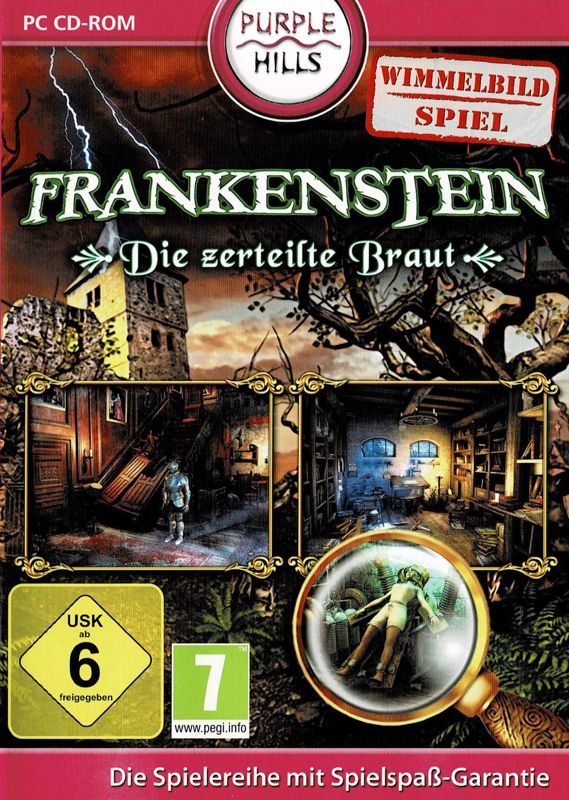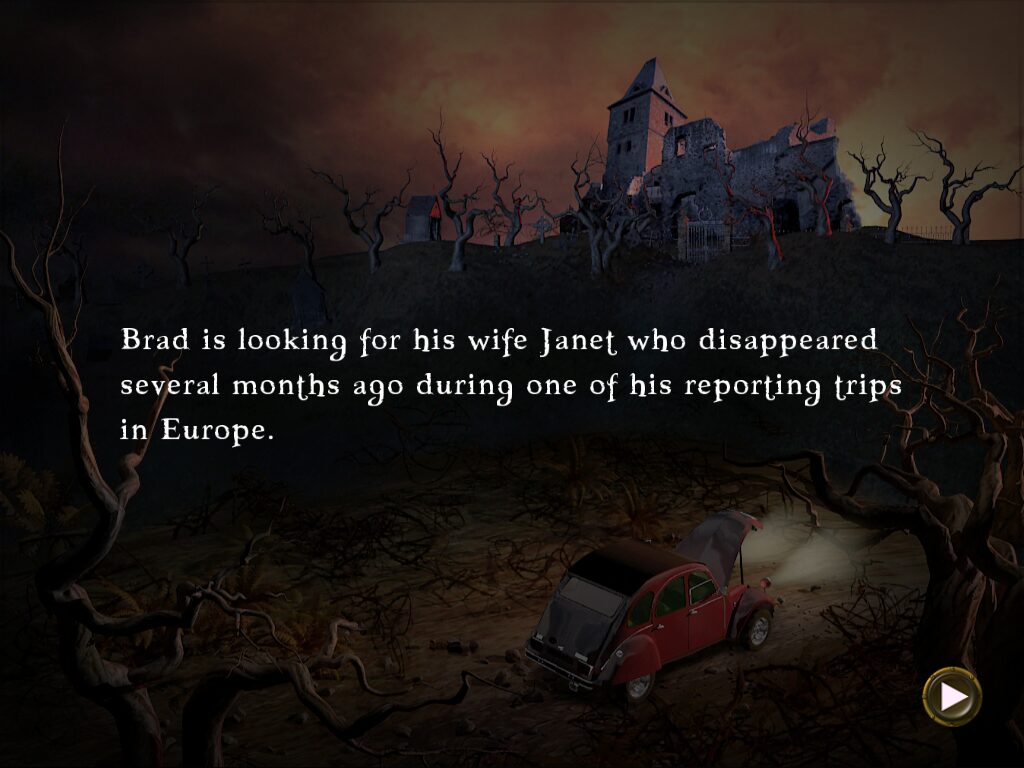Retro Replay Review
Gameplay
Frankenstein: The Dismembered Bride centers on classic hidden-object mechanics, tasking players with exploring a series of intricately designed mansion rooms in search of key items. Each static screen presents a detailed tableau filled with curiosities and curios that must be located, clicked, and collected. After clearing the object list, players secure one of Janet’s body parts or, in later stages, components of Frankenstein’s latest contraption. This cycle of collection and assembly drives the core gameplay loop, encouraging methodical observation and patience.
(HEY YOU!! We hope you enjoy! We try not to run ads. So basically, this is a very expensive hobby running this site. Please consider joining us for updates, forums, and more. Network w/ us to make some cash or friends while retro gaming, and you can win some free retro games for posting. Okay, carry on 👍)
The hint system provides unlimited assistance, highlighting one required item at a time. While the hints recharge after a brief cooldown period, they prevent the player from becoming overly frustrated when objects blend into the macabre surroundings. This balance ensures that both casual gamers and hidden-object aficionados can progress without feeling unduly stymied. The assembly tabs for Janet and the machine—displayed on the screen’s left side—offer a tangible sense of progress and heighten the emotional stakes as body parts accumulate.
Navigation is straightforward, with a simple menu guiding players from room to room. There is no character movement or direct interaction beyond clicking on objects, which keeps the focus firmly on puzzle-solving rather than action or platforming. A language selection setting allows users to switch between English, French, Spanish, German, and Italian, making the game accessible to a broader audience without affecting the object-hunting experience.
Beyond hidden-object challenges, the game occasionally introduces minor mechanical puzzles involving machine parts, switches, and levers. These puzzles serve as brief interludes, breaking up the core fetch-quest rhythm and adding variety. Although they are rarely taxing, they underscore the Frankenstein theme by requiring players to manipulate the doctor’s contraptions.
Overall, the gameplay in Frankenstein: The Dismembered Bride is a thoughtful blend of exploration and collection, paced by episodic progress toward reassembling Janet and thwarting the mad scientist. It succeeds in delivering a cohesive, if straightforward, hidden-object experience that remains accessible to newcomers while offering enough challenge for genre veterans.
Graphics
The visual presentation in Frankenstein: The Dismembered Bride is steeped in gothic atmosphere, featuring richly detailed background art that evokes 19th-century Bavarian architecture. Each room is hand-painted with moody lighting, aged wood textures, and creeping shadows, creating an immersive environment for the hidden-object hunt. The attention to period detail—from flickering candelabras to dusty tomes—enhances the sense of dread and curiosity.
Despite its static-screen format, the game employs subtle animations to breathe life into each location. Flickering lights, drifting dust motes, and small ambient movements draw the eye and reinforce the mansion’s haunted aura. Transitional fade-ins and occasional scripted cutscenes provide narrative context, ensuring the visuals never feel too static or disconnected.
Object icons and inventory tabs are crisply rendered and neatly categorized, ensuring players can quickly identify collected items. Janet’s body parts and mechanical components are depicted with gruesome realism, which may unsettle some players but aptly underscores the horror theme. The color palette shifts subtly as the game progresses, growing darker and more saturated in key areas to reflect rising tension.
Graphical performance remains steady across supported platforms, with smooth scrolling between scenes and minimal load times. The user interface is intuitive, with easily readable text and discrete button placements, so the art remains the star. Whether you view the game on a large monitor or a smaller laptop screen, the visuals maintain clarity without sacrificing atmospheric detail.
In short, the graphics of Frankenstein: The Dismembered Bride excel at setting a chilling mood through detailed artwork, restrained animation, and coherent UI design. They effectively transport players into Dr. Frankenstein’s domain, balancing beauty and horror in equal measure.
Story
The narrative kicks off with Brad’s urgent quest: traveling to Bavaria to find his missing fiancée, Janet. When his car conks out near an ominous mansion, he is compelled to investigate. What unfolds is a tale of mad science, love, and revenge. As Brad explores corridor after corridor, peeling back layers of mystery, the player uncovers the gruesome truth—Janet has been dismembered and used as Frankenstein’s latest experiment.
The story’s loose adaptation of Mary Shelley’s 1818 novel pays homage to the original while carving its own path. Rather than focusing on the philosophical debates of life and creation, the game emphasizes a personal vendetta. Brad’s desperation lends emotional weight to the hidden-object formula: each recovered body part brings him one step closer to reuniting with Janet and exacting justice on the deranged doctor.
Frankenstein himself remains an enigmatic presence for much of the game, glimpsed only through notes, schematics, and the monstrous contraptions he builds. This sparse characterization enhances the villain’s mystique, fueling curiosity and unease. Occasional narrative interludes—voiced in multiple languages—provide backstory on past experiments, hints at hidden wings of the mansion, and foreshadow the final confrontation.
While the plot does not veer into complex twists or multiple endings, it maintains a steady sense of momentum. The juxtaposition of love and horror, combined with the creeping dread of exploring a living house of corpses, delivers a compelling narrative thread that keeps players motivated to hunt down every hidden object.
In essence, the story of Frankenstein: The Dismembered Bride is a straightforward yet effective revenge tale. It capitalizes on familiar gothic tropes while centering on Brad’s emotional journey, making each discovery feel personally significant and narratively satisfying.
Overall Experience
Frankenstein: The Dismembered Bride offers a polished hidden-object adventure that deftly melds gothic horror with emotional stakes. Its steady difficulty curve and unlimited hint system ensure that progress never stalls, while the gradual assembly mechanic for Janet and the machine provides a constant sense of purpose. For players who enjoy methodical puzzle-solving in atmospheric settings, this title delivers exactly what one might crave.
The game’s length is moderate: most players will spend between four to six hours completing both Janet’s ominous reconstruction and the final mechanical showdown. While replayability is limited—hidden-object layouts remain fixed—achievement hunters may revisit rooms to improve their completion times or try out different language tracks to experience the narrative in French or Spanish, for example.
Sound design and music further reinforce the mood, with eerie string arrangements and distant thunderclaps underscoring each exploration. Subtle ambient sounds—creaking boards, dripping water—add tension without overpowering the puzzles. The UI is user-friendly, and accessibility options like adjustable cursor sensitivity make the experience smooth for a variety of players.
Though it doesn’t revolutionize the hidden-object genre, Frankenstein: The Dismembered Bride stands out for its thematic consistency and emotional core. Brad’s quest feels both urgent and personal, transforming what could have been a routine scavenger hunt into a story-driven adventure filled with suspense. The gothic visuals, methodical gameplay loop, and haunting narrative coalesce into a memorable journey through Frankenstein’s dark domain.
Whether you’re drawn by the promise of macabre storytelling or simply seek a well-crafted hidden-object challenge, Frankenstein: The Dismembered Bride delivers a satisfying package. It’s an engaging title for fans of atmospheric puzzles, classic horror, and narrative-driven casual gaming alike.
 Retro Replay Retro Replay gaming reviews, news, emulation, geek stuff and more!
Retro Replay Retro Replay gaming reviews, news, emulation, geek stuff and more!









Reviews
There are no reviews yet.